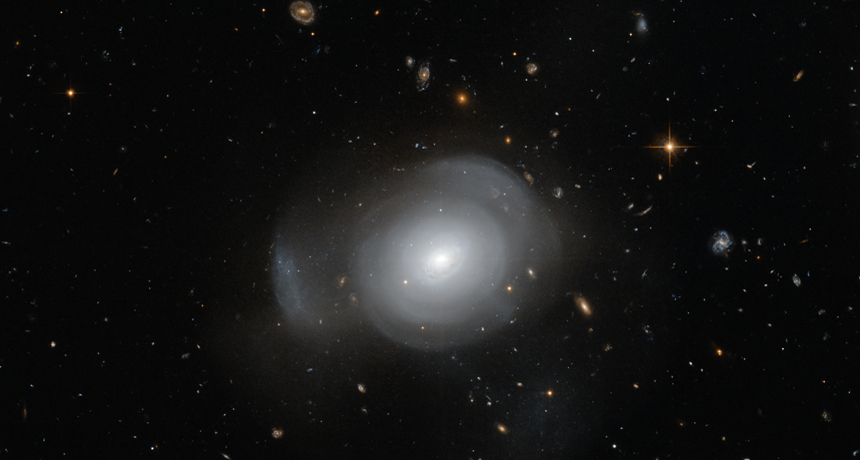Galaxy’s petal-like structures came from collision
A cosmic crash of two huge masses of stars, gas and dust probably gave way to structure of star clusters

GETTING SLAMMED The concentric shells of PGC 6240 (shown) and the young star clusters that orbit it may have formed when the galaxy smashed into another one.
Judy Schmidt/Hubble’s Hidden Treasures, Hubble, ESA, NASA